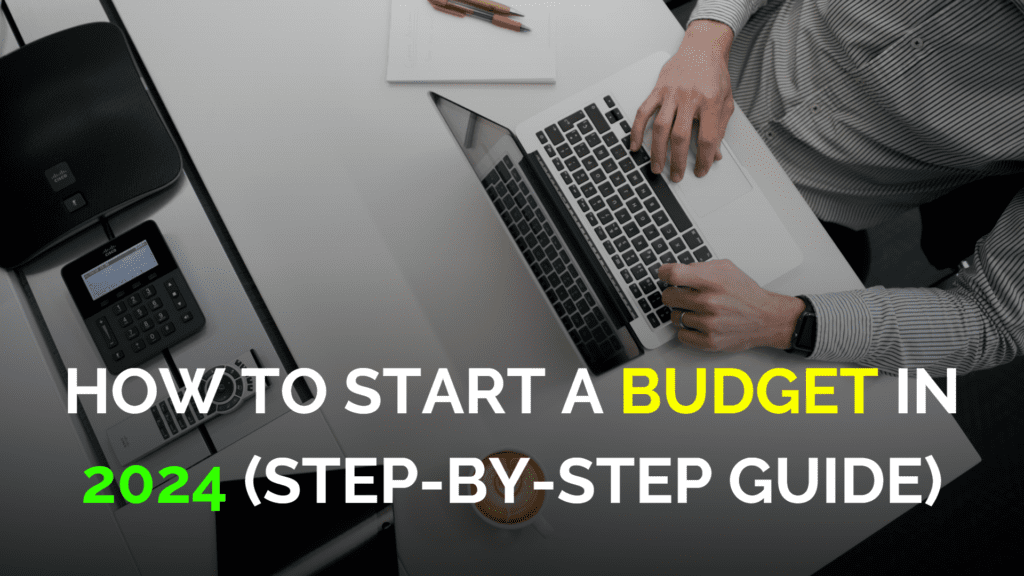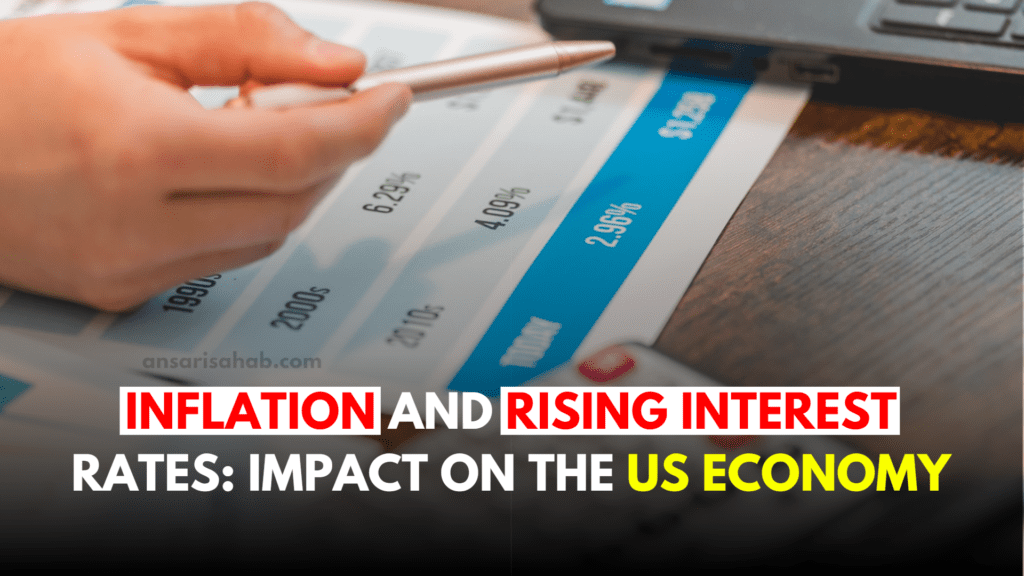A stock portfolio is simply a collection of different investments you own in the stock market—this can include shares of individual companies, exchange-traded funds (ETFs), and sometimes even mutual funds. Think of it like a garden: each stock or fund is a different plant, and together, they grow to create your wealth over time.
Why is 2025 a great time to start building one?
The investing landscape has changed dramatically in recent years. Thanks to the rise of fractional shares, you no longer need large sums of money to own pieces of big companies like Apple or Tesla—you can start with as little as $10. AI-driven investment tools now help beginners make data-backed decisions without being overwhelmed by charts and numbers. And with more global markets opening up to retail investors, you can diversify your portfolio internationally with just a few clicks.
The earlier you start building your stock portfolio, the more you can benefit from the power of compounding—where your returns start generating their own returns over time. Whether you’re a student, a young professional, or someone finally ready to take control of your finances, there’s no better time than now to begin.
You don’t need a fortune to start—just a smart plan. In this guide, we’ll walk you through a step-by-step process to create a beginner-friendly portfolio that’s built for growth, stability, and long-term success in 2025.
What is a Stock Portfolio?
A stock portfolio is the collection of all the stocks and other related investments you own. It’s your personal “basket” of assets in the stock market, and it represents how you’ve chosen to invest your money.
For beginners, it’s important to understand that a portfolio isn’t just about owning one or two shares—it’s about diversifying your investments to balance potential rewards and risks. Here’s how it can look:
Types of Portfolios:
- Growth-Focused Portfolio: Targets companies with high growth potential, often in tech or emerging industries. These can offer bigger returns but may be more volatile.
- Income-Focused Portfolio: Contains stocks that pay regular dividends, providing a steady income stream alongside possible price growth.
- Balanced Portfolio: A mix of growth and income investments, offering a middle ground between stability and growth.
Why Diversification Matters:
Imagine you own shares in just one company. If that company’s stock drops, your entire investment suffers. But if your portfolio includes different companies, industries, and even countries, a decline in one area might be balanced by growth in another.
A stock portfolio is essentially your financial blueprint in the stock market—it reflects your goals, your tolerance for risk, and your strategy for building wealth over time. Understanding this foundation will make the next steps—selecting investments and managing them—much easier.
Why You Should Build a Stock Portfolio in 2025
If you’ve been waiting for the “right moment” to start investing, 2025 checks all the boxes for beginners. The stock market is more accessible, technology has made investing simpler, and global opportunities are at an all-time high. Here’s why now is the perfect time:
1. Access to Fractional Shares
You no longer need thousands of dollars to invest in big companies. Platforms now allow you to buy fractional shares, meaning you can own a piece of companies like Apple, Amazon, or Tesla with as little as $5–$10.
2. Beginner-Friendly Investment Tools
AI-driven apps and robo-advisors can now analyze market trends, recommend portfolios, and even rebalance your investments automatically. This takes away much of the guesswork that used to intimidate beginners.
3. Global Market Opportunities
Many brokerages now allow retail investors to access international stocks and ETFs, meaning you can diversify beyond your home country and tap into emerging economies, tech hubs, and global giants.
4. More Information Than Ever Before
Thanks to YouTube, blogs, online courses, and even free investment simulators, learning about the stock market is easier and cheaper than ever.
5. Power of Compounding
The earlier you start, the more your money benefits from compounding—where your profits generate more profits over time. Starting in 2025 means you give your investments maximum time to grow.
In short, 2025 offers the perfect combination of technology, market access, and educational resources to help beginners confidently build a portfolio that grows with them.
Get to know : Age Verification Just to Scroll Online: A Global Policy Shift in 2025
Step 1 – Set Your Financial Goals
Before you buy your first stock, you need to be clear about why you’re investing. Setting financial goals will guide every decision you make in building your portfolio. Without them, it’s easy to get distracted by market noise or tempted into risky moves.
1. Define Your Time Horizon
- Short-term goals (1–3 years): Saving for a down payment, education, or a big purchase. For short-term goals, you’ll want safer, more stable investments.
- Long-term goals (5+ years): Retirement, building wealth, or funding your child’s future. These can handle more volatility because you have time to recover from market dips.
2. Decide Your Risk Tolerance
Risk tolerance is your comfort level with market ups and downs.
- Conservative: Prefer stability over high returns (more bonds, dividend stocks, ETFs).
- Moderate: Comfortable with some volatility for better growth potential (balanced portfolio).
- Aggressive: Willing to take higher risks for potentially higher rewards (growth stocks, emerging markets).
3. Link Goals to Portfolio Type
Your goals and risk tolerance will help determine whether your portfolio should be growth-focused, income-focused, or balanced.
4. Start Small and Scale Up
If you’re new, you don’t have to invest a huge sum right away. Start with an amount you can afford to invest consistently, and increase it as you gain experience and confidence.
By clearly setting your financial goals now, you’ll create a roadmap that makes your investing decisions easier and keeps you focused even when the market gets volatile.
Step 2 – Choose the Right Investment Account
Before you can start buying stocks, you need the right “gateway” — an investment account. Think of it as your personal toolbox for holding and managing your investments. Choosing the right account depends on your goals, location, and tax situation.
1. Understand the Main Types of Accounts
- Brokerage Account (Taxable)
- Best for: Flexibility and easy access to your money.
- Pros: No contribution limits, you can withdraw anytime.
- Cons: You’ll pay taxes on gains and dividends each year.
- Retirement Accounts (Tax-Advantaged)
- Examples: 401(k), IRA (in the U.S.) or pension-linked investment accounts in other countries.
- Pros: Tax benefits can help your investments grow faster.
- Cons: Early withdrawals may have penalties.
- Specialized Accounts
- Education Savings Accounts, HSA (Health Savings Accounts), or region-specific investment plans.
2. Compare Brokers
When choosing a broker, consider:
- Fees: Look for low or zero commission trading.
- Tools & Research: Good brokers provide analysis tools, charts, and education.
- Ease of Use: A beginner-friendly interface matters if you’re just starting.
- Minimum Deposit: Some allow you to start with $0, others require a lump sum.
Popular global brokers:
- Interactive Brokers
- Fidelity
- Charles Schwab
- eToro
- TD Ameritrade
3. Check Accessibility in Your Country
Not all platforms are available everywhere. Make sure your chosen broker supports account opening in your country and provides local currency deposits if possible.
4. Open Your Account
- Fill out the online application (personal details, financial info).
- Link your bank account for funding.
- Verify your identity (passport, ID, or driver’s license).
Pro Tip: If you’re not ready to invest real money yet, open a paper trading account first. It’s a simulated platform that lets you practice without risking actual funds.
If you get your account right from the start, you’ll save yourself headaches later and have a secure, efficient place to grow your portfolio.
Step 3 – Decide Your Asset Allocation
Before you start buying, you need to answer a key question: “How much of my money should go into different types of investments?”
This is called asset allocation — the mix of stocks, bonds, ETFs, and cash in your portfolio.
1. Why Asset Allocation Matters
Think of your portfolio as a football team.
- Stocks are your strikers — they aim for big goals (high returns) but take more risks.
- Bonds are your defenders — they keep things stable and reduce the risk of big losses.
- Cash/Short-Term Investments are your goalkeeper — safe, but they won’t score much.
The right balance ensures you can grow your wealth without taking on more risk than you can handle.
2. Understand Your Risk Tolerance
Your risk tolerance depends on:
- Age: Younger investors can usually take more risk because they have time to recover from market drops.
- Goals: Are you investing for retirement in 30 years or buying a home in 5 years?
- Personality: Some people can sleep soundly during market crashes, others panic-sell.
3. Common Asset Allocation Models for Beginners
| Risk Level | Stocks | Bonds | Cash |
|---|---|---|---|
| Aggressive | 80% | 15% | 5% |
| Moderate | 60% | 30% | 10% |
| Conservative | 40% | 50% | 10% |
4. Keep It Simple with ETFs
If you don’t want to handpick individual stocks and bonds, you can buy index ETFs that automatically give you exposure to hundreds of companies or a mix of stocks and bonds.
- Examples: Vanguard Total Stock Market ETF (VTI), iShares Core S&P 500 ETF (IVV), Vanguard Total Bond Market ETF (BND).
5. Review and Adjust Over Time
Your ideal allocation today might not be the same in 10 years. As you get older or your goals change, you might want to shift towards more stable investments.
💡 Pro Tip: A popular beginner rule is the “110 minus your age” formula — subtract your age from 110 to get your ideal stock percentage.
Example: If you’re 30, 110 – 30 = 80% in stocks and the rest in bonds/cash.
Step 4 – Select Your Investments
Now that you know how much of your portfolio goes to stocks, bonds, and cash (from Step 3), it’s time to pick what exactly to buy.
1. Keep It Simple with Index Funds and ETFs
For beginners, the easiest and safest way to invest is by using low-cost index funds or ETFs.
They track the market, giving you instant diversification and reducing risk.
- Stock ETFs:
- VTI – Vanguard Total Stock Market ETF (covers the whole U.S. market)
- VOO or IVV – S&P 500 ETFs (tracks 500 biggest U.S. companies)
- VXUS – Vanguard Total International Stock ETF (global exposure)
- Bond ETFs:
- BND – Vanguard Total Bond Market ETF
- AGG – iShares Core U.S. Aggregate Bond ETF
- Balanced ETFs (mix of stocks + bonds):
- Vanguard LifeStrategy Funds (automatically balanced)
- iShares Core Growth Allocation ETF (AOR)
2. If You Want to Pick Individual Stocks
Choose large, stable companies (blue chips) and avoid putting more than 5–10% of your portfolio into any single stock.
Examples:
- Apple (AAPL)
- Microsoft (MSFT)
- Johnson & Johnson (JNJ)
- Procter & Gamble (PG)
3. Example Beginner Portfolio
| Asset Type | Percentage | Investment Option |
|---|---|---|
| U.S. Stocks | 50% | VTI or VOO |
| International | 20% | VXUS |
| Bonds | 25% | BND |
| Cash | 5% | High-Yield Savings |
4. Automate Your Investments
Set up automatic monthly contributions so you invest without overthinking. This is called Dollar-Cost Averaging — it helps smooth out market ups and downs.
💡 Pro Tip: Avoid “hot stock tips” and hype — stick to your plan. The boring, consistent investor usually wins in the long run.
Step 5 – Open an Investment Account & Start Investing
Now that you know what to invest in, here’s how to actually get started:
1. Choose the Right Type of Account
- If you’re in the U.S.:
- Brokerage Account – Flexible, no withdrawal restrictions (good for general investing)
- Roth IRA / Traditional IRA – For retirement, with tax benefits
- If you’re outside the U.S. (like in Qatar):
- Use international brokers that accept your country:
- Interactive Brokers (global, low fees, huge market access)
- Saxo Bank (good for Middle East investors)
- eToro (easy for beginners, supports stocks, ETFs, crypto)
- TD Ameritrade (for certain countries)
- You can also use local brokerage accounts if your bank offers them, but check fees.
- Use international brokers that accept your country:
2. Open Your Account
- Fill in personal details, ID proof, and bank details
- This can usually be done 100% online
- Some platforms require a minimum deposit (e.g., $0–$500)
3. Fund Your Account
- Transfer money from your bank
- For international brokers, use Wise or Revolut to save on currency conversion fees
4. Place Your First Investment
- Search for your chosen ETF or stock (e.g., “VTI”)
- Select Buy, enter the amount, and confirm
- If possible, enable recurring investments every month
5. Stay Consistent & Track Progress
- Invest monthly — even small amounts matter
- Rebalance your portfolio once or twice a year
- Avoid panic selling during market dips
✅ Your First Investment Checklist
- Account opened
- Funds deposited
- ETF/stock selected
- First purchase made
- Recurring investments set up
Step 6 – Monitor, Rebalance & Grow Your Wealth
You’ve started investing — great! But now the real game is sticking to the plan and letting compounding work for you.
1. Track Your Portfolio
- Use free tools like:
- Google Sheets (simple & customizable)
- Yahoo Finance Portfolio
- Personal Capital / Empower (US-based investors)
- Interactive Brokers app (if you use IBKR)
- Check once a month, not daily — this avoids emotional decisions.
2. Rebalance Your Portfolio
- What is rebalancing? Adjusting your investments to keep your original plan.
- Example:
- Your plan: 70% stocks, 30% bonds
- After 1 year: 80% stocks, 20% bonds (stocks grew faster)
- Solution: Sell some stocks, buy bonds to restore 70/30
- How often?
- Once a year is enough for most people
- Or if any asset moves 5–10% away from your target
3. Avoid Emotional Investing
- Market crash? Don’t panic — crashes are discount sales for long-term investors
- Stock hype? Avoid FOMO buying just because it’s trending on social media
- Stick to your long-term plan — wealth grows with discipline
4. Increase Contributions Over Time
- Whenever your income rises, increase your monthly investment
- Even $50 extra per month can add tens of thousands over decades
5. Review Goals Every Few Years
- Major life changes? Adjust:
- Marriage
- Buying a house
- Retirement planning
- Shift towards safer investments as you get closer to your goal
💡 Pro Tip:
The investors who get rich are not the ones who trade the most — they are the ones who invest regularly, stay patient, and let compounding do the heavy lifting.
Step 7 – How to Protect Your Investments from Risks & Taxes
Building wealth isn’t just about making good investments — it’s also about protecting your money from common pitfalls like market risks, taxes, and fees. Here’s how beginners can safeguard their portfolios in 2025:
1. Diversify to Reduce Risk
- Don’t put all your money into one stock or sector.
- Spread across industries, geographies, and asset types (stocks, bonds, real estate).
- Use ETFs and index funds for easy diversification.
2. Use Tax-Advantaged Accounts
- Invest through retirement accounts like IRAs, 401(k)s (US) or local equivalents to reduce tax burdens.
- If retirement accounts aren’t available, consider tax-efficient investing strategies like holding ETFs long-term to minimize capital gains taxes.
3. Be Mindful of Fees
- High fees can significantly eat into your returns over time.
- Choose low-cost brokers and funds with low expense ratios.
- Avoid frequent trading that incurs commissions or spreads.
4. Protect Against Inflation
- Inflation erodes purchasing power.
- Include assets like stocks and inflation-protected bonds that historically outpace inflation over time.
5. Have an Emergency Fund
- Keep 3-6 months of expenses in a liquid account to avoid forced selling of investments during market downturns or emergencies.
6. Stay Informed on Regulatory Changes
- Tax laws and investment regulations can change.
- Follow trusted financial news sources or consult a financial advisor to stay updated.
💡 Pro Tip:
In 2025, many platforms offer automated tax-loss harvesting tools that help offset gains with losses to reduce your taxable income—ask your broker if this feature is available.
Useful Tools and Resources for Beginners in 2025
Starting your investing journey is easier and more enjoyable when you have the right tools and resources at your fingertips. In 2025, there are plenty of apps, websites, and educational materials designed specifically to help beginners learn and grow their portfolios confidently.
Best Apps and Platforms
- Robinhood: User-friendly app ideal for beginners, with commission-free trades and fractional shares.
- eToro: Social investing platform where you can follow and copy experienced traders.
- Interactive Brokers: Offers a wide range of global markets and advanced tools for serious investors.
- Fidelity & Charles Schwab: Trusted brokerages with excellent research tools and customer service.
- Wealthfront & Betterment: Robo-advisors that build and manage your portfolio automatically based on your goals and risk tolerance.
Educational Websites, Courses, and Books
- Investopedia: Comprehensive articles and tutorials on all investing topics.
- Morningstar: Great for research on stocks, ETFs, and mutual funds.
- Coursera & Udemy: Platforms offering beginner-friendly investing courses, often with video lessons and quizzes.
- Books:
- The Intelligent Investor by Benjamin Graham
- A Random Walk Down Wall Street by Burton Malkiel
- One Up On Wall Street by Peter Lynch
Stock Market Simulators
- Investopedia Simulator: Practice trading with virtual money in a real-market environment.
- MarketWatch Virtual Stock Exchange: Compete with others while learning market mechanics.
- HowTheMarketWorks: Offers free tools and educational content for beginners.
Using these tools and resources will help you build your knowledge, practice risk-free, and make smarter investing decisions in 2025. The more you learn, the more confident you’ll become as you grow your stock portfolio.
Conclusion
Building a stock portfolio as a beginner in 2025 is easier than ever, thanks to accessible technology, user-friendly platforms, and a wealth of educational resources. By following this step-by-step guide—setting clear financial goals, choosing the right account, deciding your asset allocation, selecting investments wisely, and consistently monitoring and rebalancing—you’re laying a solid foundation for long-term financial success.
Remember, you don’t need a large sum to start. Even small, regular investments can grow significantly over time thanks to the power of compounding. Patience, discipline, and continuous learning will be your best allies on this journey.
Your first portfolio could be the start of your financial freedom. So why wait? Take the first step today, and watch your money work for you in 2025 and beyond.









